Qinhuai River, Nanjing - Tickets, Öffnungszeiten, Highlights und Tipps
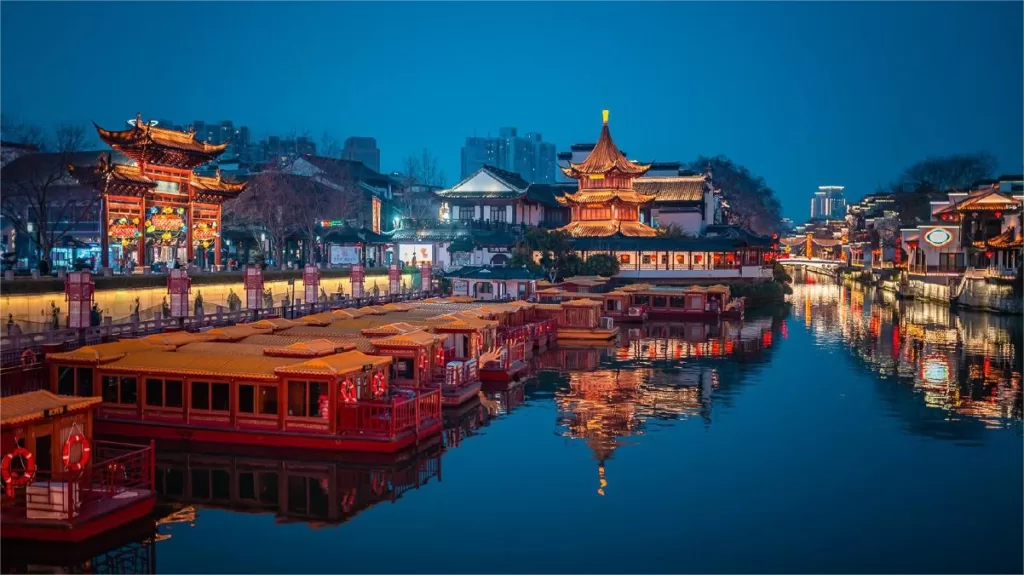

Qinhuai River (秦淮河), located in the downstream right bank of the Yangtze River in China, is a significant tributary with a rich history and cultural heritage. Known as Longcangpu in ancient times, it was referred to as Huai River during the Han Dynasty. However, the name Qinhuai was adopted during the Tang Dynasty and has endured since then. Most of Qinhuai River flows through Nanjing City, making it the city’s largest regional waterway. Its historical importance in terms of transportation, irrigation, and cultural significance has earned it the title of “Nanjing’s Mother River,” and it is celebrated as the “Number One Historic and Cultural River in China.”
The heart of Qinhuai River’s cultural heritage can be found in the Confucius Temple Scenic Area, also known as the Qinhuai Scenic Area, situated in the central part of Qinhuai District in Nanjing, Jiangsu Province. This area, covering an area of 4.69 square kilometers, is centered around the Confucius Temple and features the Qinhuai River as its axis, with the Ming City Wall as a unifying element. It is a hub connecting numerous nationally significant cultural heritage sites and historic relics.
The Confucius Temple Scenic Area encapsulates a rich tapestry of cultural elements, including Confucianism, the imperial examination system, folk traditions, and more. It seamlessly combines natural beauty, picturesque landscapes, temple complexes, academic institutions, bustling markets, local residences, culinary delights, shopping, educational initiatives, and festive celebrations. This unique blend makes it not only a repository of Nanjing’s historical and cultural treasures but also the largest traditional street market in China.
Inhaltsübersicht
- Grundlegende Informationen
- Standort und Transport
- History of Qinhuai River
- Highlights of Qinhuai River
- Vlog about Qinhuai River
- Attractions near Qinhuai River
Grundlegende Informationen
| Website | http://www.njfzm.net/ |
| Geschätzte Dauer der Tour | 3 Stunden |
| River Cruise Ticket Price | 60 RMB during the day 80 RMB at night |
| Die Öffnungszeiten | 9.00 - 21.00 |
| Telefon Nummer | 0086-025-86703309 |
Standort und Transport
The Qinhuai River is located in Nanjing, the capital city of Jiangsu Province in eastern China. It flows through the central part of the city, making it easily accessible and a popular tourist attraction. To get there, you can choose the following ways:
Bus: Take bus 1, 4, 40, 44, or 202, get off at Jiankang Road Confucius Temple, and walk about 200 meters to the south to reach the river.
Metro: The nearest metro station to Qinhuai River as a tourist attraction is Confucius Temple on line 3. After getting out of the station from Exit 3, walk about 300 meters to the south to reach the bank of the river.
History of Qinhuai River
The history of the Qinhuai River is deeply rooted in the city of Nanjing, which served as the capital of several Chinese dynasties throughout history. Spanning over two millennia, the river has witnessed the rise and fall of empires, the flourishing of arts and culture, and the transformation of Nanjing itself.
The origins of the river can be traced back to the third century BCE, during the reign of the Qin Dynasty. It was initially called the Yuhuai River and served as a key transportation route for goods and supplies. However, it wasn’t until the Ming Dynasty (1368-1644) that the river gained prominence and its name was changed to Qinhuai.
During the Ming Dynasty, the area surrounding the river flourished as a bustling commercial and cultural hub. The imperial court invested in the development of Nanjing, leading to the construction of magnificent buildings, temples, gardens, and bridges along the riverbanks. The Qinhuai River became known as the “River of Fragrance” due to the abundance of flowers and fragrant plants that lined its shores.
Throughout the centuries, the river and its surroundings witnessed significant historical events. In the 19th century, during the Taiping Rebellion, the riverbanks became a battleground, resulting in extensive damage to the area. However, the city of Nanjing recovered, and the Qinhuai River regained its charm and allure.
In recent years, the city of Nanjing has undertaken efforts to preserve and revitalize the Qinhuai River area. Restoration projects have been initiated to protect the historical buildings and improve the overall environment. This has enhanced the appeal of the river as a tourist attraction, attracting visitors from around the world.
Highlights of Qinhuai River
Konfuzius-Tempel

Located on the banks of the Qinhuai River, the Confucius Temple is a majestic complex that pays homage to the renowned philosopher, Confucius. This cultural gem showcases exquisite architecture, serene gardens, and ornate halls adorned with intricate carvings and statues. Visitors can explore the temple grounds, admire the tranquil beauty of the surrounding landscape, and gain insights into Chinese history and philosophy. The Confucius Temple is a place of reverence and a center for cultural activities, offering a serene and enlightening experience for those seeking to immerse themselves in the teachings and traditions of Confucianism.
Zhonghua Gate

Standing proudly on the Qinhuai River, the Zhonghua Gate is a magnificent architectural marvel that forms a part of Nanjing’s ancient city wall. This imposing structure offers a glimpse into China’s rich history and military heritage. Visitors can climb to the top of the gate and be rewarded with breathtaking panoramic views of the Qinhuai River and its surroundings. The Zhonghua Gate serves as a reminder of Nanjing’s past as a fortified capital, evoking a sense of awe and admiration for its grandeur.
Imperial Examination Museum

Situated on the banks of the Qinhuai River, the Nanjing Imperial Examination Museum offers a fascinating glimpse into China’s ancient examination system. This unique museum showcases the history and significance of imperial examinations, which determined the fate of scholars seeking government positions. Visitors can explore the museum’s exhibits, which include historical artifacts, documents, and interactive displays, providing insights into the rigorous testing process and its impact on Chinese society.
River Cruises

River cruises on the Qinhuai River offer an enchanting way to explore its beauty and immerse oneself in the rich history and culture of Nanjing. Traditional Chinese boats, adorned with vibrant lanterns, gracefully navigate the tranquil waters, providing a serene and picturesque experience. As you embark on a leisurely cruise, you’ll be treated to breathtaking views of historic landmarks, elegant bridges, and lush riverside scenery. The soothing ambiance is enhanced by the gentle ripple of the water and the soft melodies of traditional music.
Han Opera

Han Opera, a traditional Chinese performing art, takes center stage on the Qinhuai River, captivating visitors with its vibrant colors, melodious music, and captivating storytelling. This cultural treasure showcases the grace and beauty of traditional Chinese opera, featuring exquisite costumes, elaborate makeup, and intricate movements. Performances on the Qinhuai River bring to life the rich history and folklore of Nanjing, enchanting audiences with tales of love, heroism, and mythology. Whether it’s the mesmerizing vocals or the skilled acrobatics, Han Opera on the Qinhuai River offers a captivating and immersive experience, transporting spectators to a world of ancient Chinese culture and artistic excellence.
Laternenfest

The Lantern Festival on the Qinhuai River is a dazzling spectacle that illuminates the night sky with a kaleidoscope of colors. This traditional Chinese celebration, held on the 15th day of the lunar calendar, transforms the riverbanks into a mesmerizing wonderland. Thousands of intricately crafted lanterns adorn the surroundings, casting a warm and magical glow over the water. Visitors can immerse themselves in the festive atmosphere, marvel at the artistic lantern displays, and enjoy cultural performances, music, and dance. The Lantern Festival on the Qinhuai River is a truly enchanting experience, capturing the essence of traditional Chinese celebrations and creating unforgettable memories.
Nightlife and Shopping

The nightlife and shopping scene on the Qinhuai River is a vibrant and bustling experience that enchants visitors. As the sun sets, the riverbanks come alive with a myriad of entertainment options, from lively bars and clubs to cultural performances and live music. The vibrant atmosphere invites you to immerse yourself in the energetic nightlife. Additionally, the area is dotted with markets, shops, and boutiques where you can find a wide range of traditional handicrafts, silk products, and souvenirs. Whether you seek an exciting night out or a delightful shopping spree, the Qinhuai River offers a dynamic blend of entertainment and retail therapy.
Vlog about Qinhuai River
Attractions near Qinhuai River

Der historische Bezirk Laomendong - ein Zeugnis der lebendigen Vergangenheit Nanjings

Zhanyuan-Garten - ein 600 Jahre altes Refugium
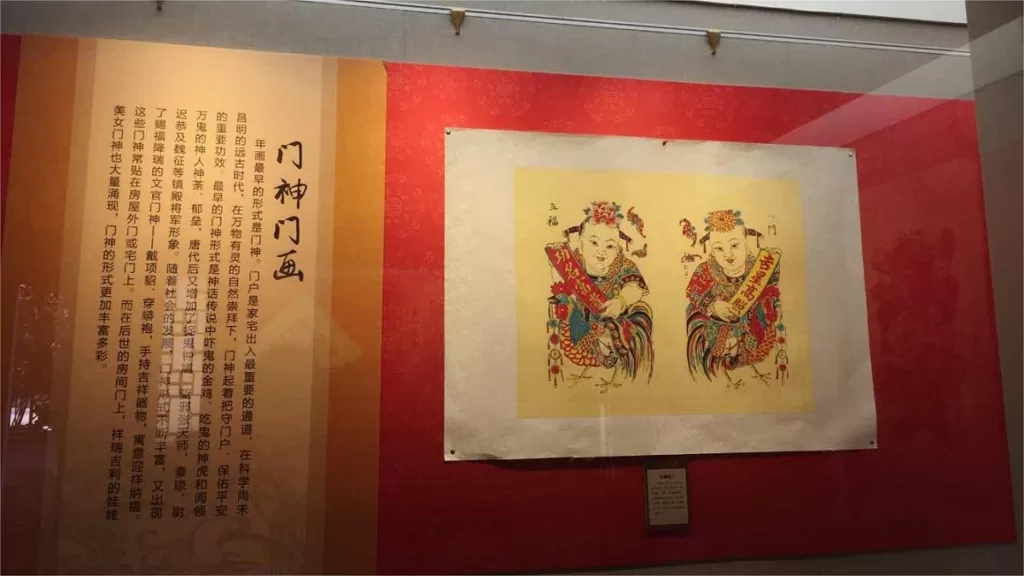
Nanjing Folk Museum - Ein Einblick in das tägliche Leben der Einheimischen
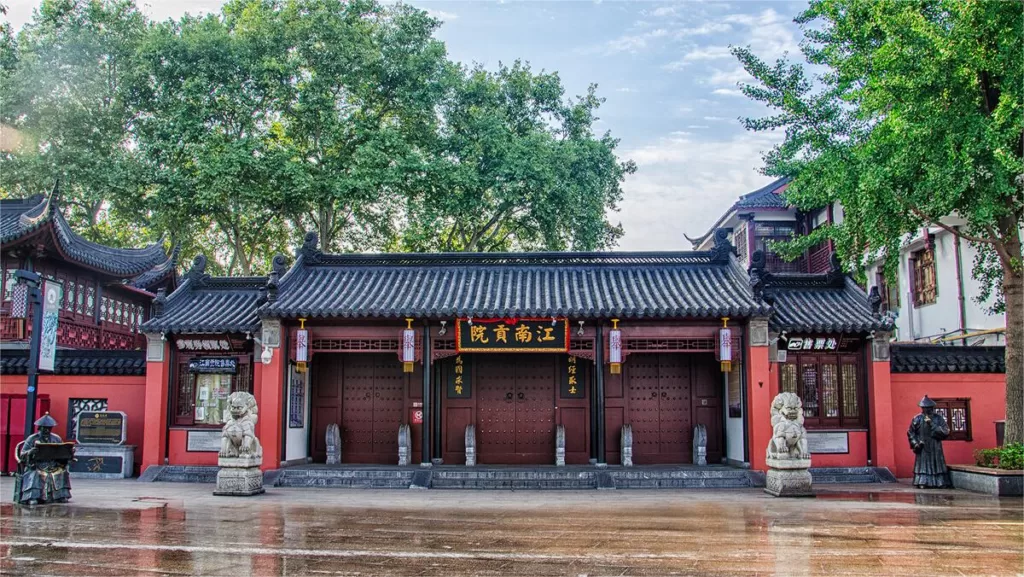
Die Jiangnan-Prüfungshalle - eine Schlüsselinstitution in Chinas kaiserlichem Prüfungssystem
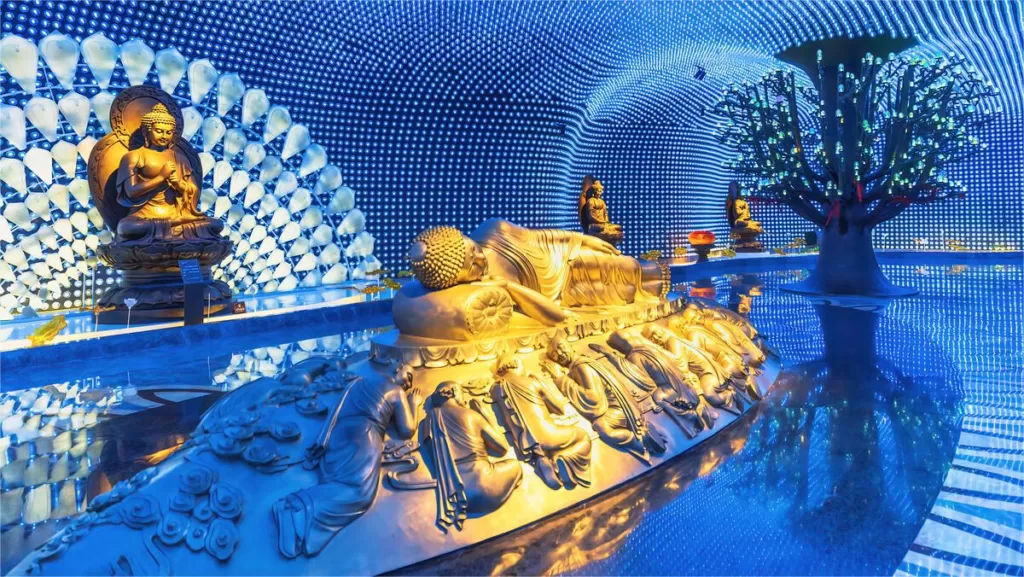
Bao'en-Tempel - Ursprünglich im 4. Jahrhundert erbaut
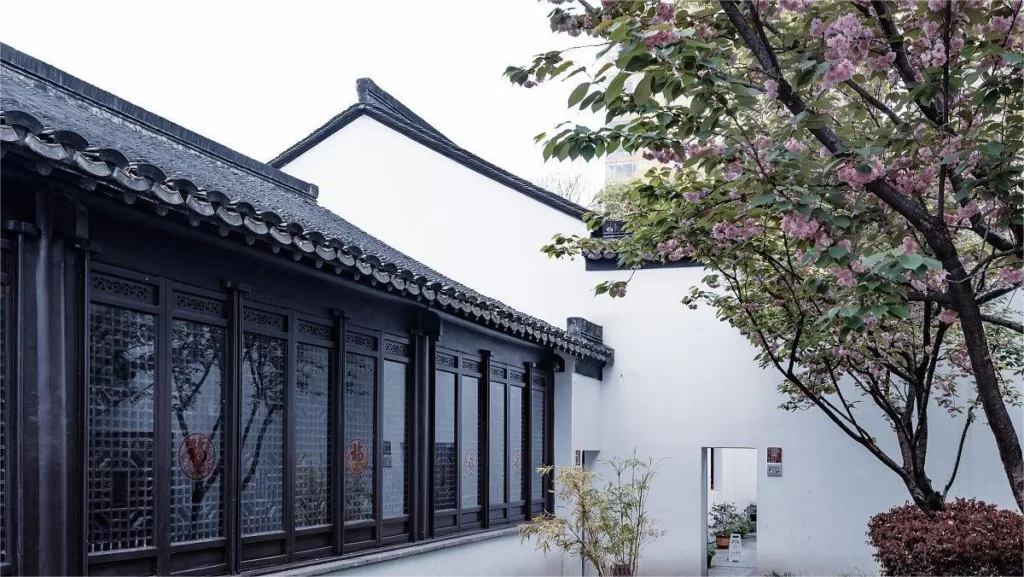
Die ehemalige Residenz von Gan Xi - ein Ort aus einer vergangenen Epoche

Der Porzellanturm von Nanjing - ein architektonisches Wunderwerk
Jiangsu-Landschaft, Nanjing Attraktionen